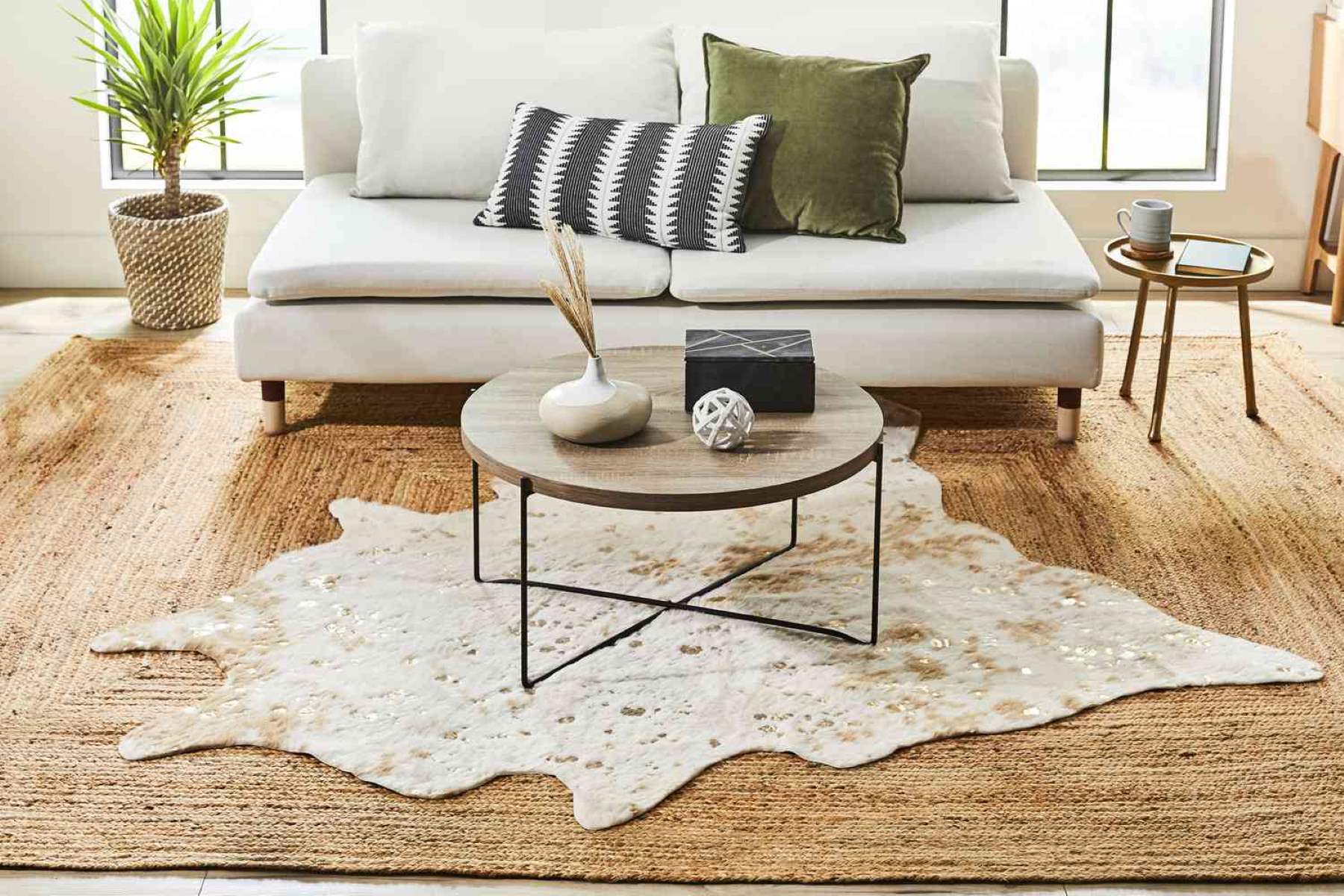

Articles
How Do You Layer Rugs
Modified: December 7, 2023
Learn how to effectively layer rugs in your home with these insightful articles. Discover tips and tricks to create the perfect look and maximize your space.
(Many of the links in this article redirect to a specific reviewed product. Your purchase of these products through affiliate links helps to generate commission for Storables.com, at no extra cost. Learn more)
Introduction
Welcome to the world of layered rugs!
Have you ever entered a room and felt an instant burst of warmth and coziness? Chances are, that feeling was a result of the carefully curated layers of rugs adorning the floor. Layering rugs has become a popular trend in interior design for its ability to add depth, texture, and visual interest to any space. Whether you are looking to create a cozy reading nook or to add a touch of creativity to your living room, layering rugs can transform your space into a stylish and inviting sanctuary.
But how do you layer rugs effectively? How do you choose the right rugs, colors, and patterns? And what are the best techniques for sizing, placement, and care? In this article, we will delve into the world of layered rugs and provide you with the essential tips and tricks to create a stunning layered rug look in your own home.
So, let’s dive in and explore the art of layering rugs!
Key Takeaways:
- Embrace the art of layering rugs to add depth, warmth, and character to any space. Experiment with textures, colors, and patterns to create a visually stunning and personalized design that reflects your unique style.
- Proper sizing, placement, and care are essential for maintaining the beauty and longevity of layered rugs. From selecting the right rugs to experimenting with layering techniques, unleash your creativity and transform your space into a stylish and inviting sanctuary.
Read more: How To Layer Rugs In Living Room
Understanding Layered Rugs
Before we delve into the intricacies of layering rugs, it’s important to understand the concept and benefits of this design technique. Layered rugs involve placing multiple rugs of different sizes, textures, and patterns on top of each other, creating a visually interesting and dynamic look.
Layering rugs serves several purposes. Firstly, it adds depth and dimension to a room. By layering rugs, you create visual interest and draw attention to different areas of the space. This technique can be particularly effective in larger rooms or open-concept spaces where you want to create distinct zones or define specific areas.
Secondly, layered rugs provide warmth and comfort. By adding an extra layer under your feet, you create a plush and cozy feeling. This is especially beneficial in rooms with hardwood or tiled floors, as rugs can help insulate the space and reduce noise.
When it comes to style, layered rugs allow you to mix and match different patterns, colors, and textures to create a unique and personalized look. This technique gives you the flexibility to experiment with various rug combinations, adding personality and character to your space.
However, it’s important to strike a balance when layering rugs. Each rug should complement the others and contribute to the overall aesthetic. Avoid overwhelming the space with too many rugs or conflicting patterns. The goal is to create a cohesive and harmonious look that enhances the room’s ambiance.
Now that you have a better understanding of the concept of layered rugs, let’s explore the essential factors to consider when choosing the right rugs for your layered look.
Choosing the Right Rugs
When it comes to layering rugs, selecting the right rugs is crucial to achieving a cohesive and visually pleasing result. Here are some factors to consider when choosing the rugs for your layered look:
1. Size: Start by determining the size of the space you want to cover with layered rugs. Measure the area and consider the dimensions of the furniture in the room. The rugs you choose should be proportionate to the space and complement the furniture arrangement.
2. Texture: Mixing different textures is key to creating depth and visual interest in your layered rug design. Consider combining rugs with different pile heights, such as a plush shag rug with a flat-woven rug, or a soft wool rug with a jute rug. The contrast in textures will add dimension and create a more dynamic look.
3. Pattern: When layering rugs, it’s important to balance patterns to avoid overwhelming the space. If one rug has a bold pattern, opt for a more subtle or solid-colored rug as the base layer. Alternatively, you can choose rugs with complementary patterns or colors to create a cohesive and harmonious look.
4. Color: Consider the color scheme of the room when selecting the rugs for layering. You can choose rugs that match the existing color palette to create a unified look, or opt for contrasting colors to make a bold statement. Keep in mind that lighter-colored rugs tend to make a room feel more spacious, while darker colors can add depth and create a cozy atmosphere.
5. Material: The material of the rugs will impact the overall look and feel of the layered design. From natural fibers like wool and jute to synthetic materials like polyester and nylon, each material offers different characteristics. Consider the durability, maintenance requirements, and texture of the rugs when making your selection.
Remember, the key is to find a balance between the different elements – size, texture, pattern, color, and material – to create a cohesive and visually appealing layered rug look. Once you have chosen the right rugs, it’s time to explore the techniques for sizing, placement, and layering.
Selecting Colors and Patterns
When it comes to layering rugs, selecting the right colors and patterns is crucial to achieving a visually appealing and harmonious look. Here are some tips to help you choose the perfect colors and patterns for your layered rug design:
1. Complementary Colors: Consider the existing color scheme of your room and choose rugs that complement the palette. You can opt for rugs that feature similar colors to create a cohesive look, or go for contrasting colors to make a bold statement. Just ensure that the colors work well together and enhance the overall aesthetic of the space.
2. Pattern Proportion: Layering rugs with different pattern sizes can create an interesting visual effect. Pair rugs with smaller patterns as the base layer, and layer rugs with larger or bolder patterns on top. This helps to balance the visual weight and prevents the patterns from clashing or overpowering each other.
3. Mix and Match Patterns: Don’t be afraid to mix and match patterns when layering rugs. However, it’s important to strike a balance and create a cohesive look. Choose patterns in similar color tones or styles to maintain a sense of harmony. For example, if one rug has a geometric pattern, you can layer it with a rug featuring a subtle floral motif or a rug with a similar geometric pattern in a different scale.
4. Texture Contrast: Consider combining rugs with different textures to add depth and dimension to your layered rug design. Pair a rug with a plush, luxurious texture with a rug that has a more textured or natural feel, such as a jute or sisal rug. The contrast in textures will create an interesting visual and tactile experience.
5. Style Consistency: Keep the overall style of your space in mind when selecting colors and patterns for your layered rugs. If you have a modern or minimalist interior, opt for rugs with clean lines and subtle patterns. For a bohemian or eclectic style, you can explore rugs with vibrant colors and intricate patterns. Ensure that the rugs you choose align with the overall aesthetic and enhance the style of the room.
Remember, the key is to strike a balance between colors and patterns to create a visually appealing and harmonious layered rug design. Experiment with different combinations and trust your instincts to find the perfect colors and patterns that reflect your personal style and enhance your space.
When layering rugs, start with a larger, neutral rug as a base and then add a smaller, patterned rug on top for visual interest and texture. Make sure the rugs complement each other in color and style.
Sizing and Placement
Proper sizing and placement play a crucial role in achieving a well-balanced and visually pleasing layered rug look. Here are some tips to help you with sizing and placement when layering rugs:
1. Base Layer: Start by selecting a larger rug as the base layer. This rug should be large enough to anchor the seating area or define the space you want to layer rugs in. Make sure the rug extends beyond the furniture so that all the pieces are placed on the rug, creating a cohesive and unified look.
2. Layering Sizes: Choose rugs of varying sizes to create a layered effect. The layered rugs should gradually decrease in size, with each rug slightly smaller than the one beneath it. This gradual size decrease adds visual interest and depth. Alternatively, you can layer rugs of the same size for a more symmetrical look.
3. Placement: When layering rugs, pay attention to the placement of each rug. Ensure that the edges of the layered rugs align with the edges of the furniture or the boundaries of the designated area. This creates a visually pleasing and organized look.
4. Visual Balance: Consider the scale of the room and the furniture when placing the layered rugs. Aim for a balanced and proportional look where the rugs harmonize with the size of the space and the furniture within it. Avoid overcrowding the area with too many rugs or placing rugs that are too small, as this can make the space feel cluttered and unbalanced.
5. Layering Techniques: There are different layering techniques you can try to achieve various effects. One popular technique is to place a smaller rug partially on top of a larger rug, allowing the patterns and textures to overlap. Another technique is to position the layered rugs at an angle, creating an asymmetrical and dynamic look. Experiment with different techniques to find the one that works best for your space.
Remember, proper sizing and placement are key to creating a visually balanced and engaging layered rug look. Take the time to measure your space, choose appropriately sized rugs, and arrange them in a way that enhances the overall aesthetic of your room.
Read more: How Do You Clean Moroccan Rugs
Layering Techniques
Layering rugs is an art form that allows you to create a unique and personalized look in your space. Here are some popular layering techniques to help you achieve a visually stunning and well-coordinated layered rug design:
1. Oversized Rug: One simple yet effective technique is to start with an oversized rug as the base layer. This large rug acts as a foundation for the other rugs you will layer on top. It creates a solid backdrop and defines the overall space, while allowing the subsequent rugs to add texture, color, and pattern.
2. Contrast in Size and Shape: Another technique involves layering rugs of different sizes and shapes. Start with a larger rectangular rug as the base layer, then add smaller rugs of different shapes, such as round or square, on top. This creates an interesting visual contrast and adds dimension to the space.
3. Color and Pattern Coordination: To achieve a cohesive layered rug design, consider coordinating the colors and patterns of the rugs you are layering. Choose rugs that share similar color tones or patterns that complement each other. This will create a harmonious look and prevent the rugs from clashing or overwhelming the space.
4. Texture Play: Adding different textures to your layered rug design can create a visually captivating and tactile experience. Mix and match rugs with varying textures, such as a plush shag rug with a flat-woven rug, or a soft fur rug with a textured jute rug. The contrast in textures adds depth and visual interest to the overall design.
5. Rug Tiers: Another technique you can try is creating multiple tiers of layered rugs. Start with a larger rug as the base layer, then place a smaller rug on top of it, slightly overlapping. You can continue to add more rugs in progressively smaller sizes, creating a tiered effect. This technique works particularly well in larger spaces where you want to define different areas.
6. Angled Placement: For a more dynamic and modern look, consider placing the layered rugs at an angle. Instead of aligning the edges of the rugs parallel to the walls, experiment with positioning them diagonally. This creates a sense of movement and adds a contemporary touch to your layered rug design.
Remember, these techniques are meant to inspire your creativity and help you create a layered rug look that reflects your personal style. Don’t be afraid to experiment, mix and match different rugs, and trust your instincts to achieve a visually stunning result.
Taking Care of Layered Rugs
Once you have successfully created a layered rug look in your space, it’s important to take proper care of your rugs to maintain their beauty and longevity. Here are some essential tips for caring for your layered rugs:
1. Regular Vacuuming: Use a vacuum cleaner with a brush attachment to remove dust and debris from your layered rugs. Regular vacuuming helps prevent dirt from settling deep into the fibers and keeps your rugs clean and fresh. Be sure to vacuum both the top layer and the base layer rugs to ensure thorough cleaning.
2. Rotate the Rugs: To promote even wear and prevent one rug from bearing the brunt of foot traffic, rotate your layered rugs every few months. This helps distribute the wear and tear more evenly and extends the lifespan of your rugs. You can also rotate the top layer rugs to create a refreshed look and prevent permanent furniture indentation.
3. Spot Cleaning: Accidents happen, and it’s important to address spills and stains on your layered rugs promptly. Blot any liquid spills with a clean cloth or paper towel to absorb as much of the liquid as possible. Avoid rubbing or scrubbing, as it can spread the stain. Use a mild detergent and water solution to gently clean the affected area, following the manufacturer’s instructions. Test any cleaning solution on a small, inconspicuous area first to ensure it doesn’t damage the rug.
4. Professional Cleaning: While regular maintenance can keep your layered rugs in good condition, it’s also recommended to have them professionally cleaned periodically. Professional rug cleaners have the expertise and equipment to deep clean and remove embedded dirt, stains, and odors effectively. Follow the manufacturer’s guidelines or consult a professional to determine the appropriate cleaning schedule for your rugs.
5. Protect from Direct Sunlight: Prolonged exposure to direct sunlight can fade the colors of your layered rugs. Position your rugs away from windows or use window treatments to minimize the sun’s harmful UV rays. If your rug is exposed to sunlight, consider using UV-protective window film or rotating the rugs occasionally to prevent uneven fading.
6. Padding: Consider using rug padding beneath your layered rugs to provide additional cushioning and grip. Rug padding helps prevent slipping, keeps the rugs in place, and protects the underlying floor surface. It also helps to extend the life of your rugs by reducing friction and wear.
By following these care tips, you can ensure that your layered rugs remain vibrant, clean, and in excellent condition for years to come. Proper care not only enhances the longevity of your rugs but also maintains the overall beauty and appeal of your layered rug design.
Conclusion
Layering rugs is a creative and versatile way to transform the look and feel of your space. By combining different textures, colors, patterns, and sizes, you can create a visually stunning and personalized layered rug design that adds depth, warmth, and character to any room. Whether you’re aiming for a cozy and inviting ambiance or a bold and eclectic statement, layering rugs allows you to unleash your inner designer and express your unique style.
Throughout this article, we’ve explored the fundamentals of layered rugs, from understanding the concept to selecting the right rugs, colors, and patterns. We’ve discussed the importance of proper sizing, placement, and layering techniques to achieve a well-balanced and visually appealing result. Additionally, we’ve shared essential tips for taking care of your layered rugs to ensure their longevity and beauty.
Remember, layering rugs is a flexible and customizable design technique. Feel free to experiment, mix and match different rugs, and trust your instincts to create a layered rug look that reflects your personal style and complements your home’s aesthetic. Don’t be afraid to step outside of your comfort zone and embrace the creative possibilities that come with layering rugs.
So, whether you’re looking to create a cozy reading nook, define different zones in an open-concept space, or simply elevate the visual appeal of your living room, don’t hesitate to try your hand at layering rugs. With the right choices and techniques, you can transform your space into a stylish and inviting sanctuary that truly feels like home.
Now, it’s time to unleash your creativity and start layering rugs to bring your vision to life. Happy decorating!
Frequently Asked Questions about How Do You Layer Rugs
Was this page helpful?
At Storables.com, we guarantee accurate and reliable information. Our content, validated by Expert Board Contributors, is crafted following stringent Editorial Policies. We're committed to providing you with well-researched, expert-backed insights for all your informational needs.

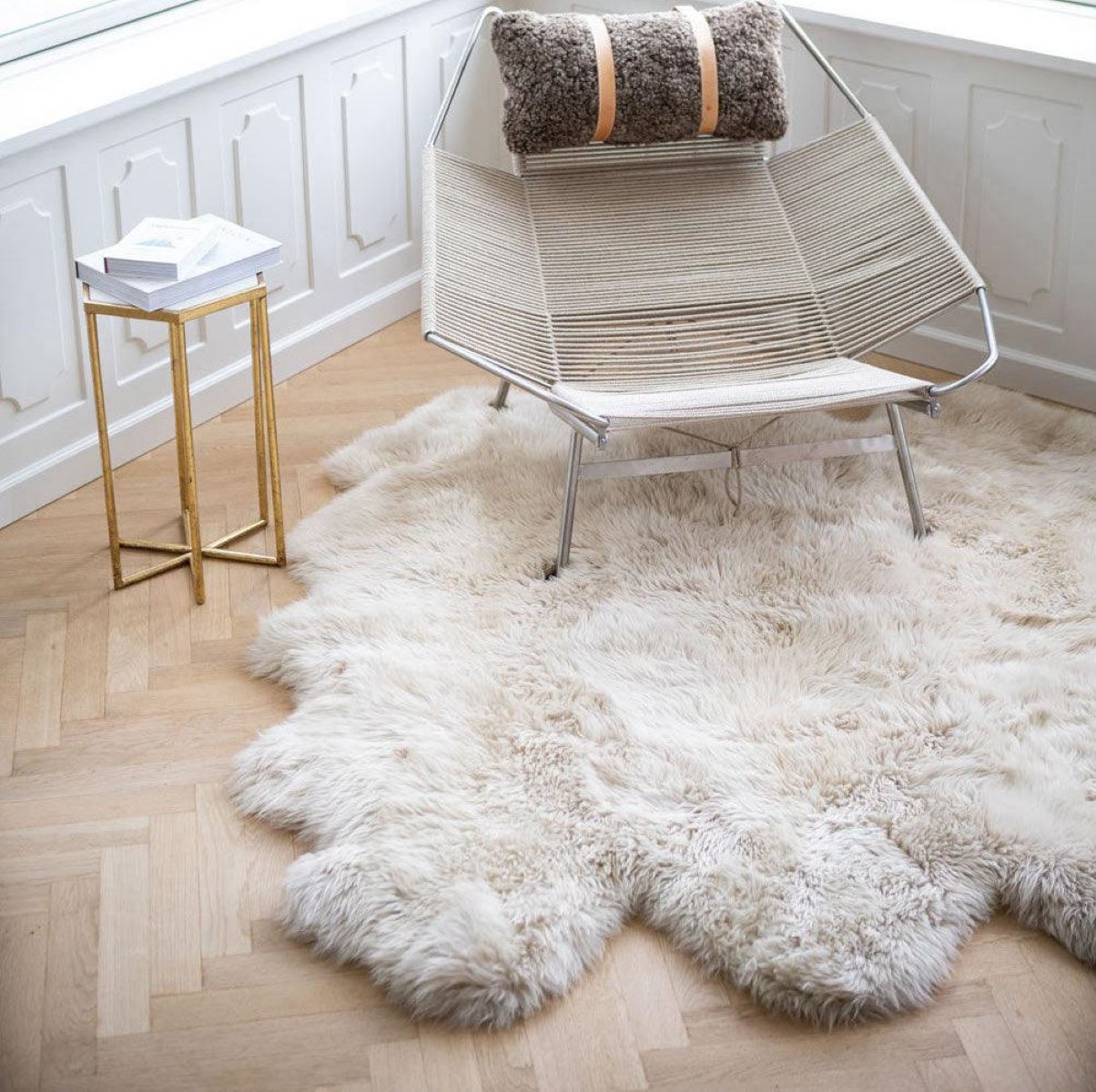
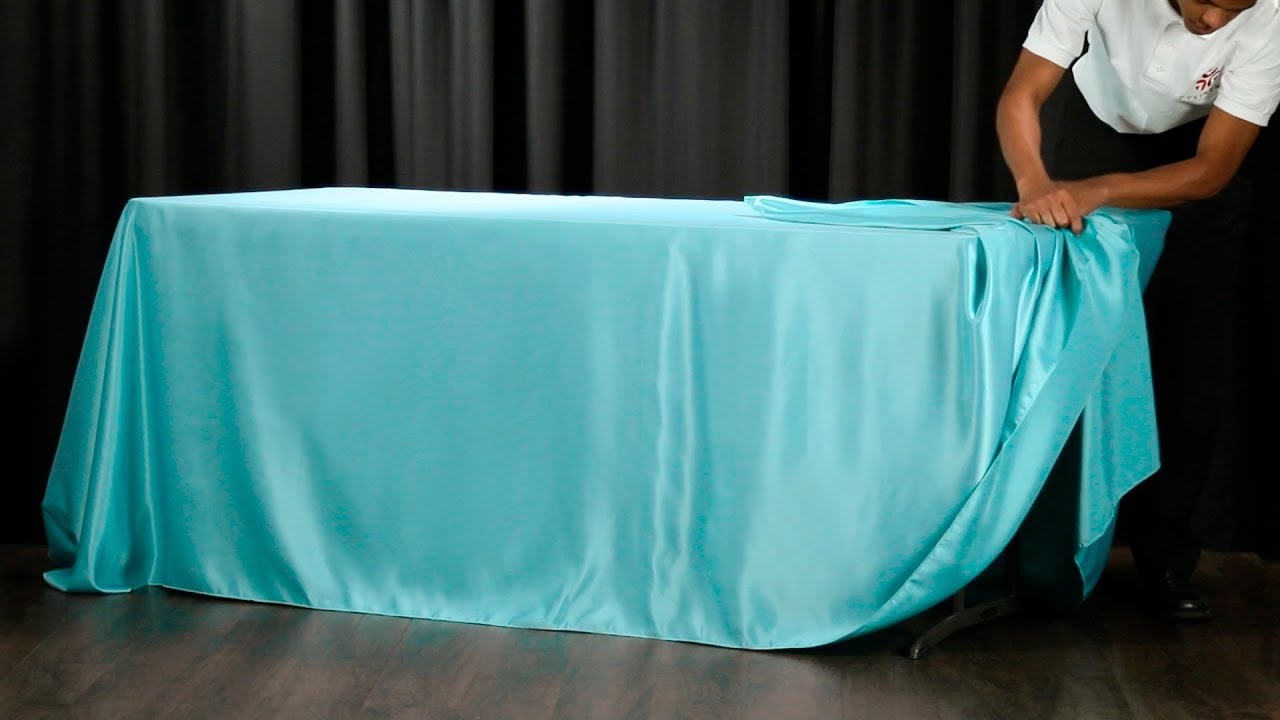

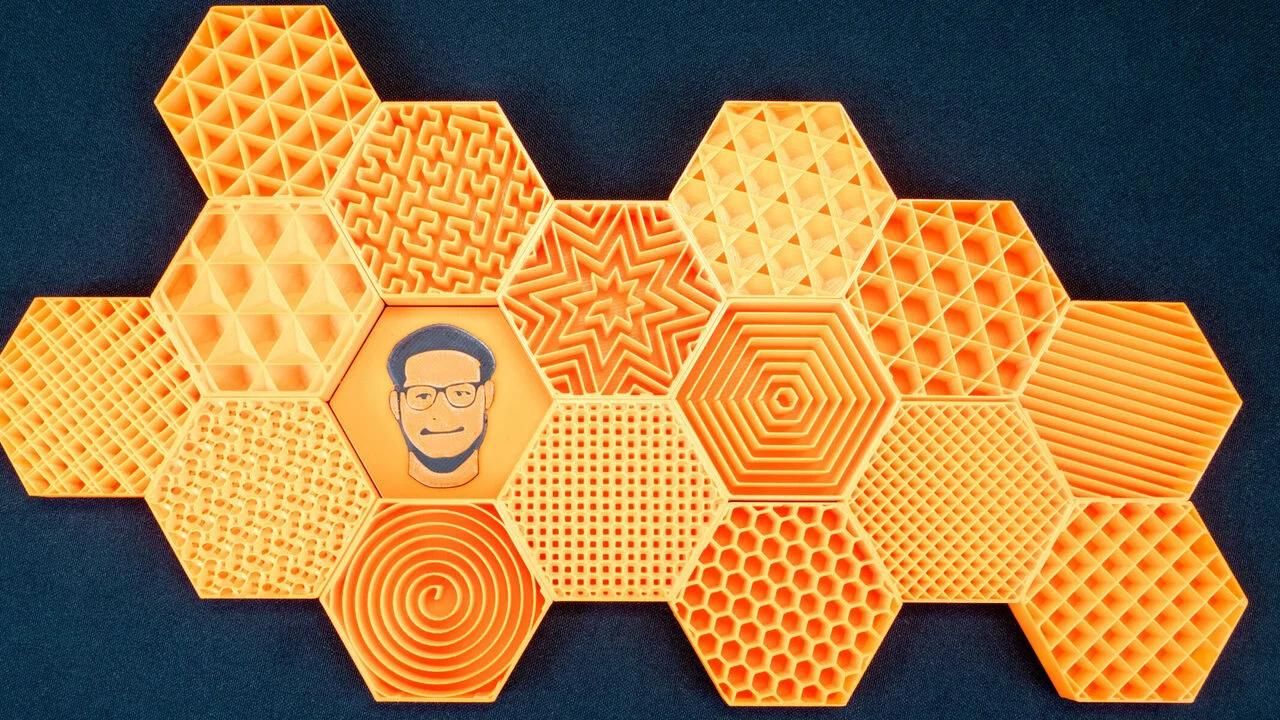
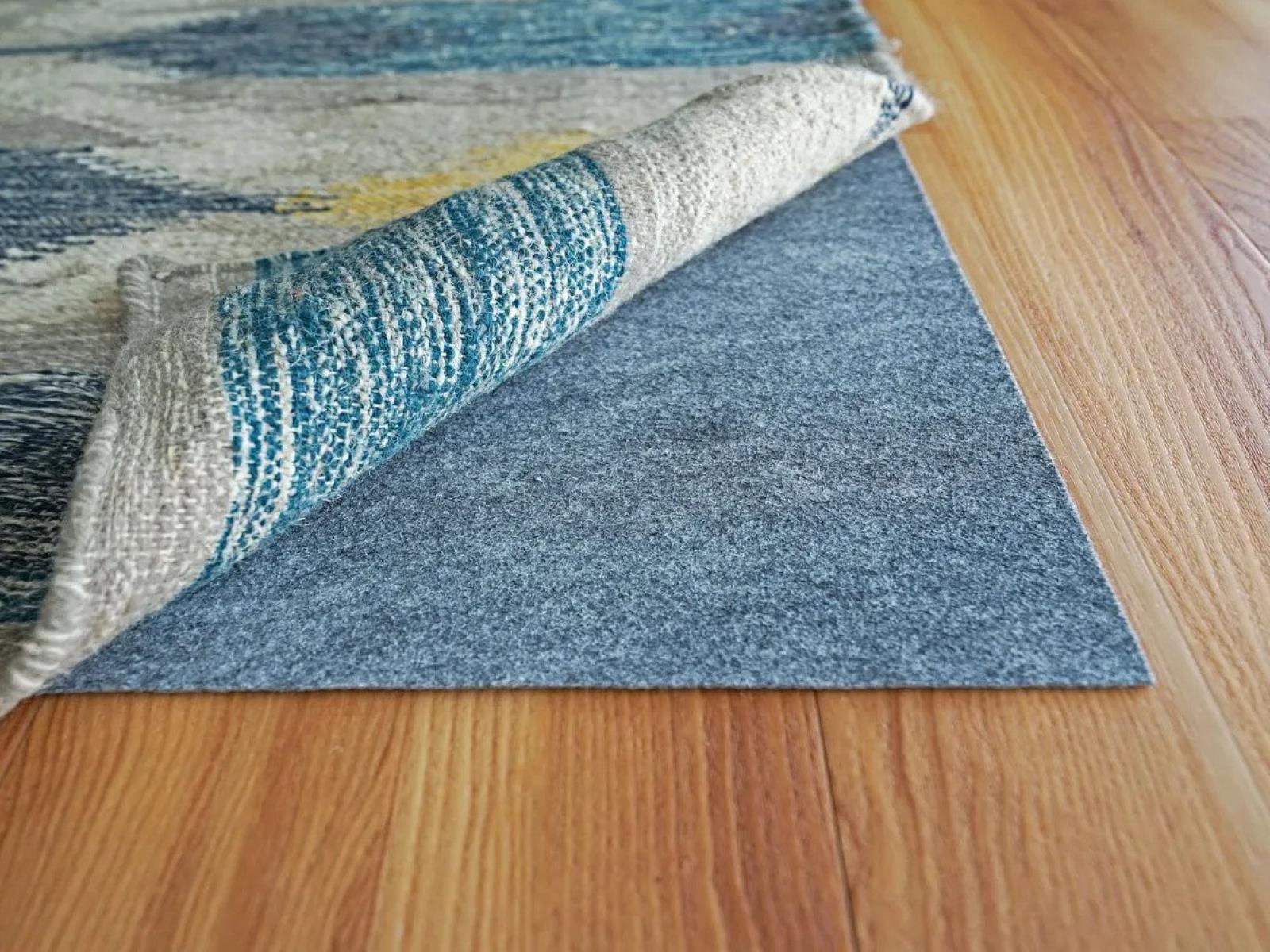


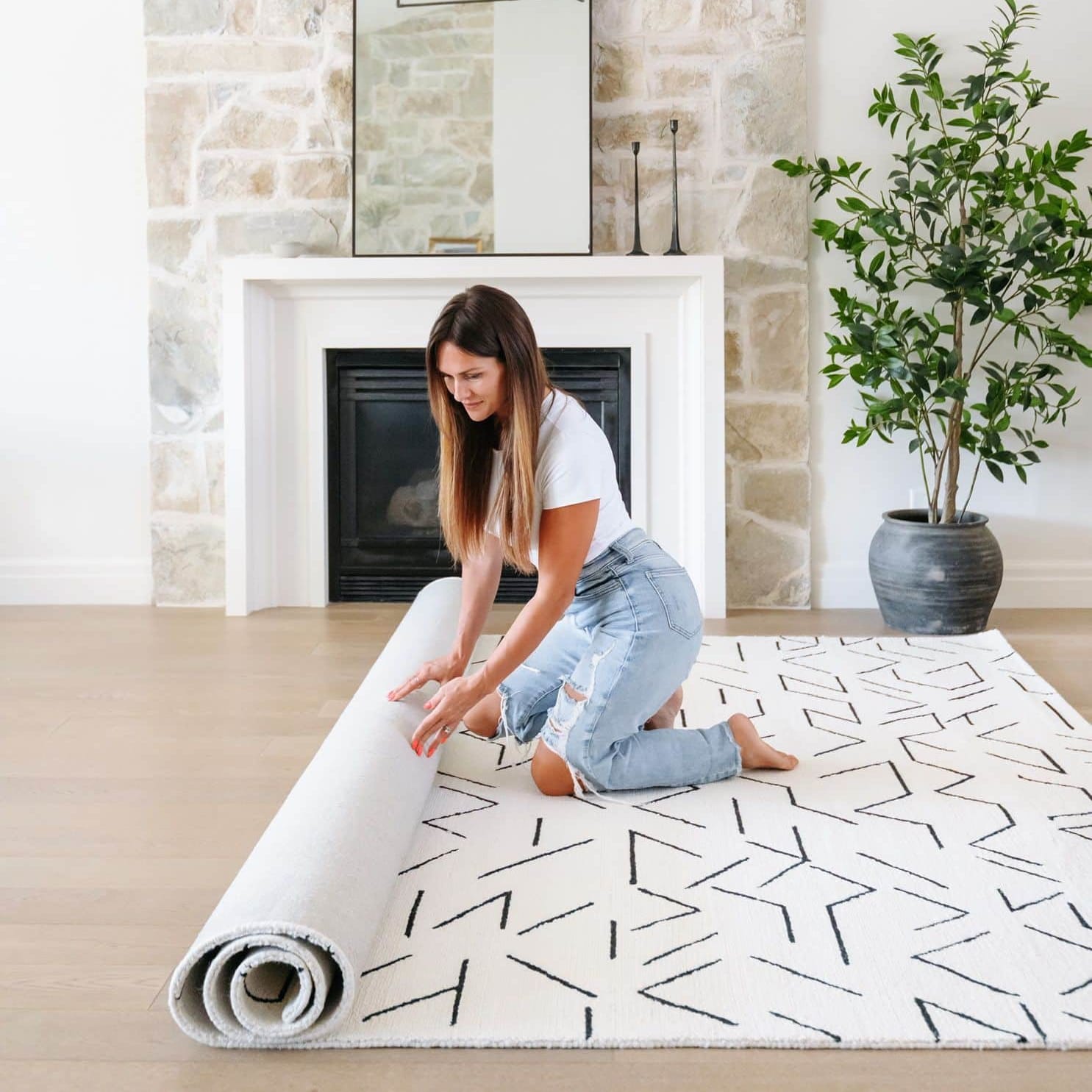
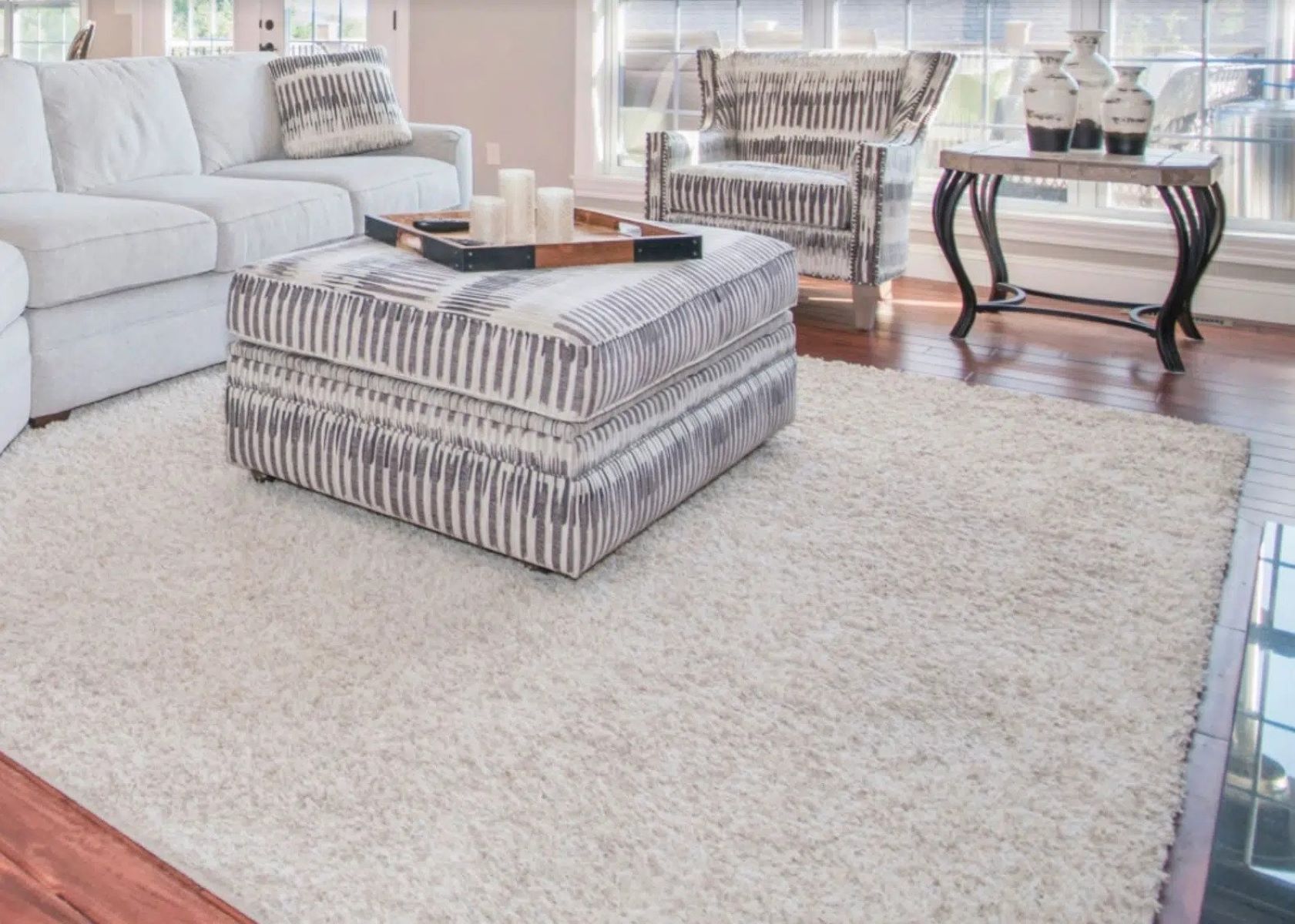
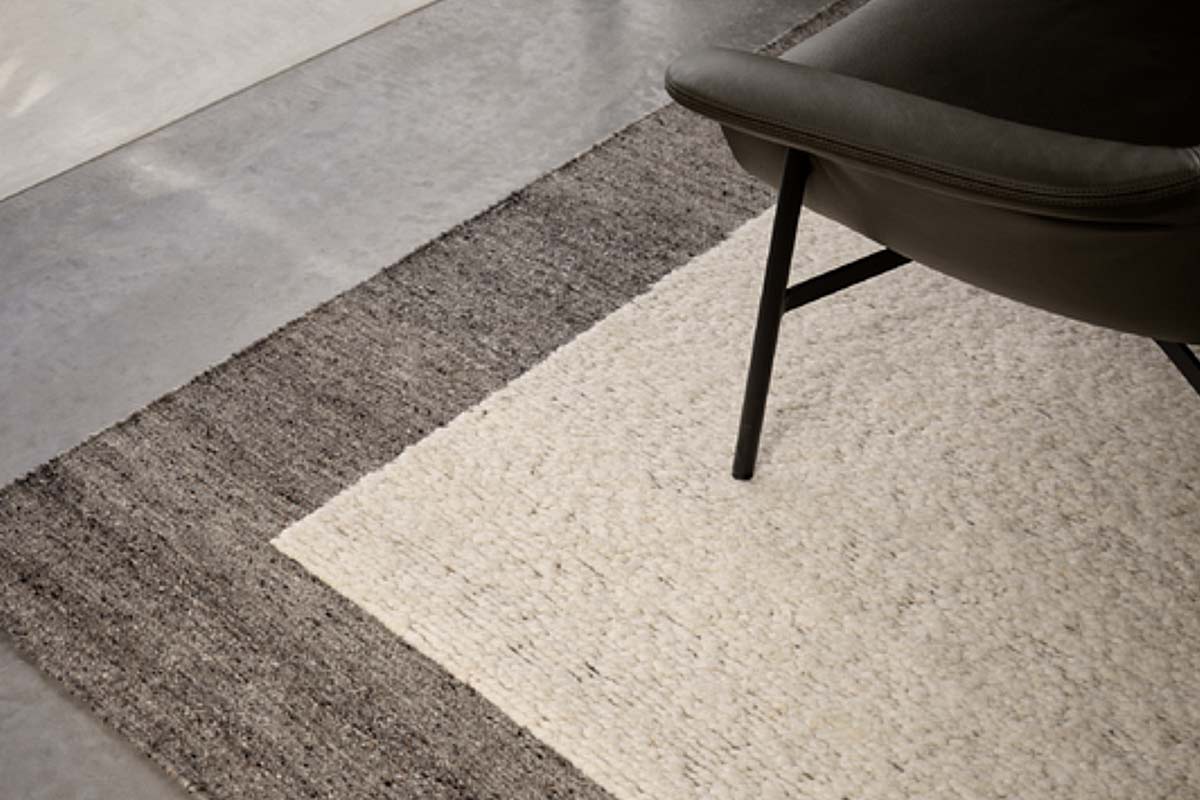
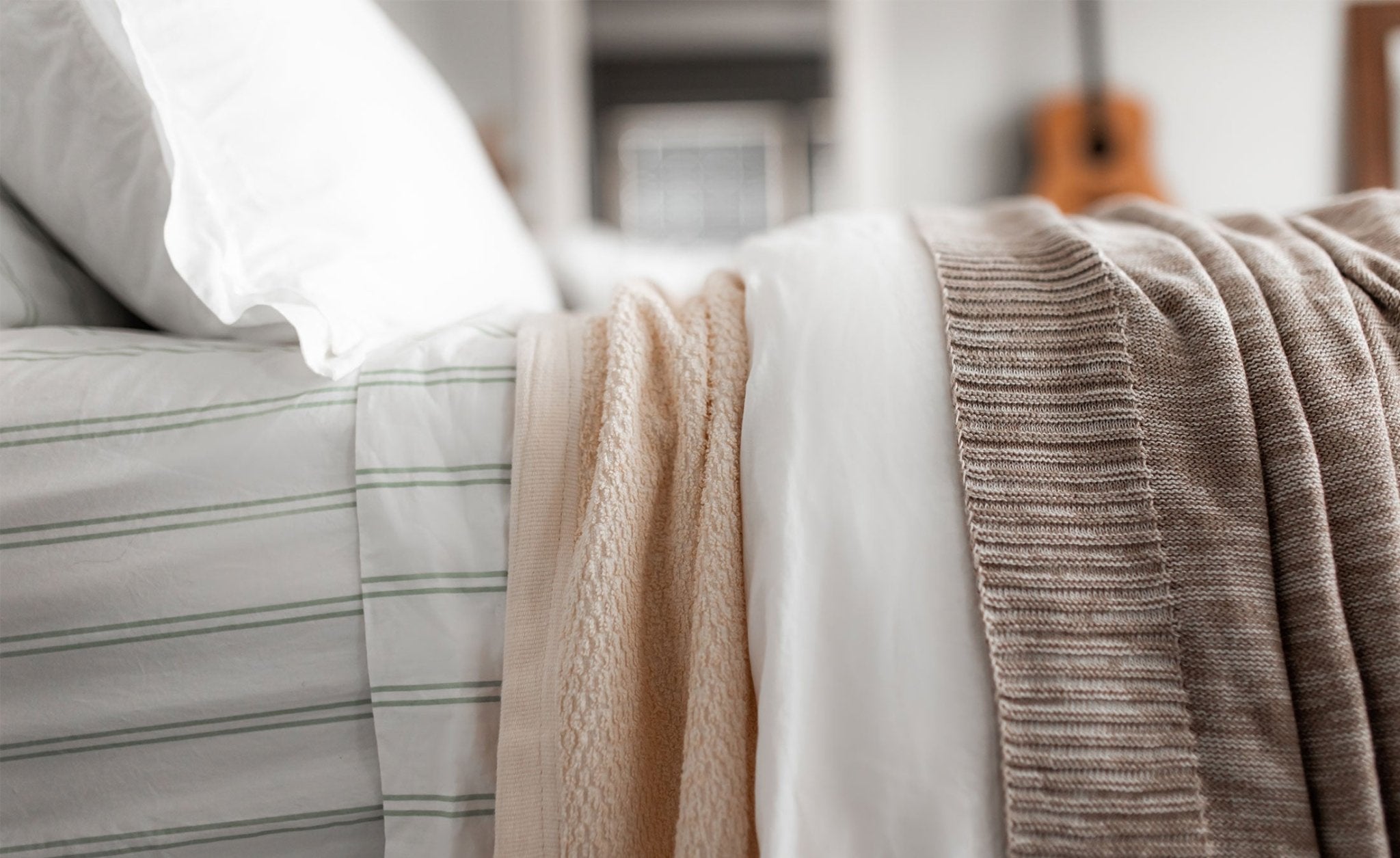



0 thoughts on “How Do You Layer Rugs”